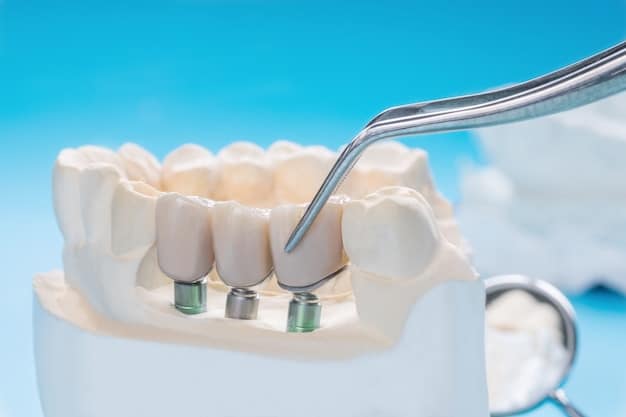Dental implants are artificial objects a dentist places in a patient’s jawbone. If a person has lost one or more teeth, they might require an implant. This blog contains all the information on the different types of implants and more details.
What Are Dental Implants?
Dental implants are metal structures surgically affixed to the jawbone beneath the gums and onto which false teeth can be installed. These metal implants anchor to your bone through osseointegration (the bone fuses to the metal). You may rely on this mechanism to support you steadily as you speak and eat.
Different Types Of Dental Implants
There are several types of dental implants available. The following section provides more details on each type of implant.
1. Endosteal Implant
The most prevalent kind of dental implant is an endosteal implant. Most patients can benefit from them, but they need a strong, healthy jawbone for the procedure. They are designed like screws and serve as placeholder posts. They penetrate the jaw, which is where the artificial teeth are attached. The false teeth can be attached to the post to blend in with the neighboring teeth once it has healed. After the surgery, the wound needs some time to heal. It needs time to come together and strengthen itself.
2. Subperiosteal Implant
Subperiosteal Implants are yet another variety of dental implants. This is the primary substitute for endosteal implants. Subperiosteal implants are placed on top of the jawbone but are still hidden beneath the gums instead of being fastened into the jawbone. Under the gum, your dentist will position a metal frame with a post. The gum heals around the frame, holding it in place. The poles that protrude from the gum have fake teeth in place. This method is only done when the patient’s jawbone is insufficient for implant placement or when the patient simply does not want to undergo extensive oral surgery to add bone to the area.
3. All-On-4 Implants
Instead of implanting a complete set of top or bottom replacement teeth, these implants are used. There is no longer a requirement for bone grafting in this process because four dental implants are inserted into the existing bone. On the same day, your dental care professional might insert a temporary set of substitute teeth. The drawback is that you must follow a special diet while the bone is healing and integrating. A permanent set of replacement teeth are inserted after only six months, allowing you to return to your regular diet.
4. Immediate Load Dental Implants
This dental implant functions similarly to a replacement tire on your car; it only replaces teeth. On the same day as your implant installation, it enables the temporary placement of a temporary tooth. If you have adequate bone and an implant that is stable enough to withstand the placement and pressure of the temporary tooth, this can be your best option.
5. Multiple Implants
Multiple implants are posts made of titanium that are placed in your jaw. These serve to replace the roots of your teeth. These implants have bridges or crowns attached to them. These offer a long-lasting alternative to dentures for missing teeth.
6. Single Tooth Implants
A single implant used to replace a single lost tooth is known as a single tooth implant. A titanium post replaces the root of the missing teeth that the dentist screws into the jawbone. The titanium post is then covered with a dental crown.
How Effective Are All-On-4 Implants?
You might suffer from low confidence issues if you are unfortunate enough to have multiple missing teeth. Dentures are a tried-and-true treatment option for many patients with considerable tooth loss. Still, they don’t always provide the confidence or comfort necessary to be completely satisfied. Fortunately, dental science and technology have produced a superior method for replacing multiple teeth than earlier treatment alternatives, which produces significantly better results. All-On-4 implants are the best solution in this case. Since the implants are anchored directly to the jawbone and function like the roots of natural teeth, the All-on-4 system reduces the effects of bone loss. One of its main advantages is that the results of the All-on-4 procedure are permanent and do not require the regular fitting appointments that traditional dentures require.
Dental implants are very flexible and adaptive to the demands of individual patients since they can be used to replace a single tooth, numerous teeth, or a complete dental arch. Visit your nearest dental office if you suffer from missing teeth and get the help you need.

